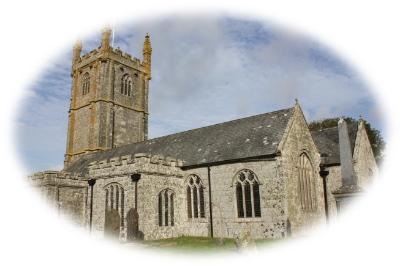Welcome to Breage St Breaca
*Click for more information on giving
Regular Giving: You can set up a Direct Debit through PGS that collects your gift, Monthly, Quarterly or Annually. There are no processing fees, and you remain in control of your gift.
One-Off Gift: You can use a Debit, Credit card or your Google or Apple Pay wallet to make a single one-off gift to your chosen parish. The Parish pays a 1.5% transaction fee to cover the costs of processing.
This Parish is registered with the Parish Giving Scheme which allows you to give to this Parish securely and safely online. Please click 'Regular Giving' to set up a monthly, quarterly, or annual Direct Debit or ‘One-Off Gift’ to make a single gift using your Debit, Credit Card or Apple/Google Pay wallet.
All are welcome to Breage Church. Whether you are a Christian looking for somewhere to worship, a seeker looking for somewhere to learn more or someone who wants a place to be quiet and meditate or pray, Breage Church is the place for you. The present church building was dedicated to St Breaca on 26th December 1456 having taken six years to build. Breaca, with Germoe, Gwinear, Piala ( Phillack ), Sinnius ( Sithney ), Crewenna ( Crowan ), Elven ( Porthleven ), Hya ( St Ives ), Uny ( Lelant and Redruth ) and Herygh ( St Erth ) were Christian Missionaries who came to Cornwall from Ireland in the late 5th or early 6th centuries. A lost Latin "Life of St Breaca" stated that she was born in Leinster or Ulster. Her first local settlement is believed to be at Chynoweth, near Trew, before she finally settled where the church now stands. Her earliest Chapel would be little more than a tiny wooden oratory housing the altar near to a Preaching Cross where the converts would gather for worship in the open air. Her burial would have made the site more sacred for her followers, and the circular shape of the "lan" (churchyard ) can still be observed despite enlargement during the Victorian era. It is likely that the early Oratory was succeeded by a more permanent stone building. An ancient Celtic Cross is situated near the South Porch. Whilst there is no evidence that this was actually associated with Breaca herself, it is of interest in that it is made of sandstone, a material not found locally. A Norman Church was built on the site in the early 12th century of which very little now remains. For some unknown reason, the church was completely rebuilt in the mid-15th century and the present church as viewed from the exterior (except for the ravages of both time and the Puritans ) is much as it was over 500 years ago. This is unusual as most old churches are built over a considerable period. Externally the church reveals the original intention and design of its unknown architect. The symmetrical interior is predominantly Victorian. What remains of the original interior are a series of Wall Paintings executed shortly after the completion of the church. Dominating the North Wall are the figures of St Christopher carrying the Christ Child and of the Christ of the Trades. These and other less complete figures show how colourful the mediaeval interior once was. Other surviving mediaeval work may be seen in the roofs of the side aisles and the North Transept. A small amount of stained glass survived the Puritan onslaught and may be seen in a window on the south wall of the Godolphin Chapel and in the south transept. The Victorian restoration of 1891 re-seated the nave and re-introduced a Rood Screen following the usage of the Middle Ages when the church was built. The 19th century innovation of robed choirs was satisfied by the provision of choir stalls in the Chancel, the High Altar and Reredos (influenced by the Ritualistic Movement ) imitated 19th century continental Roman Catholic practice. In the chapel at the eastern end of the south aisle is a burial place of members of the famous Godolphin family. The North Chapel now houses the "Father" Willis organ originally built for Thomas Robins Bolitho at Trengwainton, presented to Truro Cathedral on his death and moved to its present site in 1967. In the north west corner is a Roman milestone bearing the name of Emperor Marcus Cassinnus Postumus ( 260 - 280 AD). This was found a few hundred yards from the church in 1924. In the Godolphin Chapel is a carved stone bearing a 14th century representation of the crucifixion with the figures of St Mary and St John on either side. This was found on the coast near Tremearne. The United Parish is the gift of the Crown. The Royal Coat of Arms above the entrance door of the church is carved in high relief from oak and took two years to complete. It was worked by a lady parishioner at the request of the then Vicar of Breage, the Reverend John Cox. As the parish of Breage was in the gift of the crown, the church is one of the few entitled to display the Royal Coat of Arms and a line drawing was obtained from the Lord Chamberlain's Office at Buckingham Palace to ensure that the intricate work was accurate in every detail.
Parish name
Breage: St Breaca
Parish code
390639034
Diocese
Truro Diocese
Address
Helston
A Church Near You
Download the QR code for this parish
*Click for more information on giving
Regular Giving: You can set up a Direct Debit through PGS that collects your gift, Monthly, Quarterly or Annually. There are no processing fees, and you remain in control of your gift.
One-Off Gift: You can use a Debit, Credit card or your Google or Apple Pay wallet to make a single one-off gift to your chosen parish. The Parish pays a 1.5% transaction fee to cover the costs of processing.





